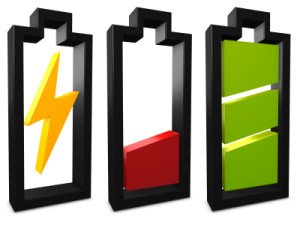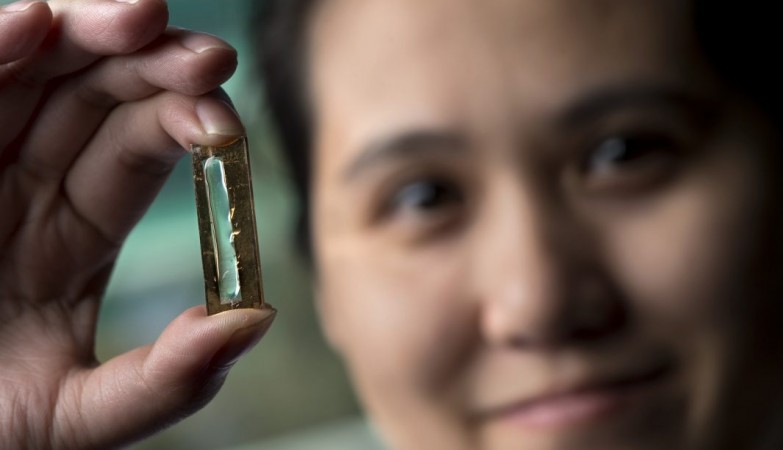One of the most desired things these days are batteries that last longer. We were already satisfied when we found where to recharge, whether in outlets or in solar powered chargers. Have you ever wondered if someone figured out how to make them last much longer? And when you talk about a lot more it’s really much more!
Currently many of the batteries used in our portable electronic equipment are lithium. They store twice as much power as a nickel metal hydride (NiMH) battery and three times as much as a nickel cadmium (NiCd) battery. Another difference of the lithium battery is the absence of the memory effect (not addictive), that is, it is not necessary to charge the battery until the total capacity and discharge to the minimum total, unlike the NiCd battery
But lithium batteries have some problems. They are easily corrupted, flammable and can even explode at high temperatures.
In search of a way to replace liquid lithium batteries with a safer and safer option, scientists at the University of California, Irvine, in the United States, dedicated themselves to testing nanowires for batteries, as they are thousands of times thinner than an human hair, highly conductive, and rely on a wide surface for the storage and transfer of electrons. The problem was in the fragility of these nano cables, which could not withstand the loading and unloading pressure.
PhD student Mya Le Thai experimented with putting a gel cover on these delicate strands, and found that gold nanowires covered with an electrolyte gel were incredibly strong, allowing the battery to continue to work effectively for hundreds of thousands of cycles of load, against the maximum of 5 or 7 thousand that the current batteries withstand before they die.
After undergoing 200 thousand cycles, the new battery only lost 5% of its efficiency, the gold of the filaments makes it very expensive, but we are already talking about researching the use of other materials, such as nickel.
That is, there is a plausible possibility that in the near future we can count on batteries that are much more durable than the current ones, whose useful life is often longer than the device it serves, as in the case of cell phones. The question is: Will there be interest in producing them?
Uma das coisas mais desejadas hoje em dia são baterias que durem mais. Já ficamos bem satisfeitos quando achamos onde recarregar, seja em tomadas, seja em carregadores movidos à energia solar. Já imaginaram se alguém descobrisse como faze-las durar muito mais? E quando se fala em muito mais é muito mais mesmo!
Atualmente muitas das baterias usadas nos nossos equipamentos eletrônicos portáteis são de lítio. Elas armazenam o dobro de energia que uma bateria de hidreto metálico de níquel (ou NiMH) e três vezes mais que uma bateria de níquel cádmio (ou NiCd). Outra diferença da bateria de lítio é a ausência do efeito memória (não vicia), ou seja, não é preciso carregar a bateria até o total da capacidade e descarregar até o total mínimo, ao contrário da bateria de NiCd
Mas as baterias de lítio tem alguns problemas. Elas são facilmente corrompidas, inflamáveis e podem até explodir em altas temperaturas. (fonte wikipedia)
Em busca de uma forma de substituir o lítio líquido das baterias por uma opção mais sólida e segura, cientistas da Universidade da Califórnia, em Irvine, nos Estados Unidos, se dedicaram a testes com nanocabos para baterias, pois eles são milhares de vezes mais finos que o cabelo humano, altamente condutores, e contam com uma superfície ampla para o armazenamento e transferência de elétrons. O problema estava na fragilidade destes nano cabos, que não aguentavam a pressão de carga e descarga.
A pesquisadora e doutoranda Mya Le Thai experimentou colocar nestes delicados fios uma capa de gel, e assim descobriram que nanocabos de ouro recobertos com um gel de eletrólitos eram incrivelmente resistentes, permitindo que a bateria continuasse trabalhando de forma efetiva durante centenas de milhares de ciclos de carga, contra o máximo de 5 ou 7mil que as baterias atuais aguentam antes de morrerem.
Depois de submetida a 200 mil ciclos, a nova bateria só perdeu 5% da sua eficiência, o ouro dos filamentos a torna bem cara, mas já se fala em pesquisar o uso de outros materiais, como o níquel.
Ou seja, há uma possibilidade plausível de que em um futuro próximo possamos contar com baterias muito mais duradouras que as atuais, cuja vida útil, muitas vezes, já é maior que a do aparelho a que serve, como no caso dos celulares.
A pergunta é: haverá interesse em produzi-las?





